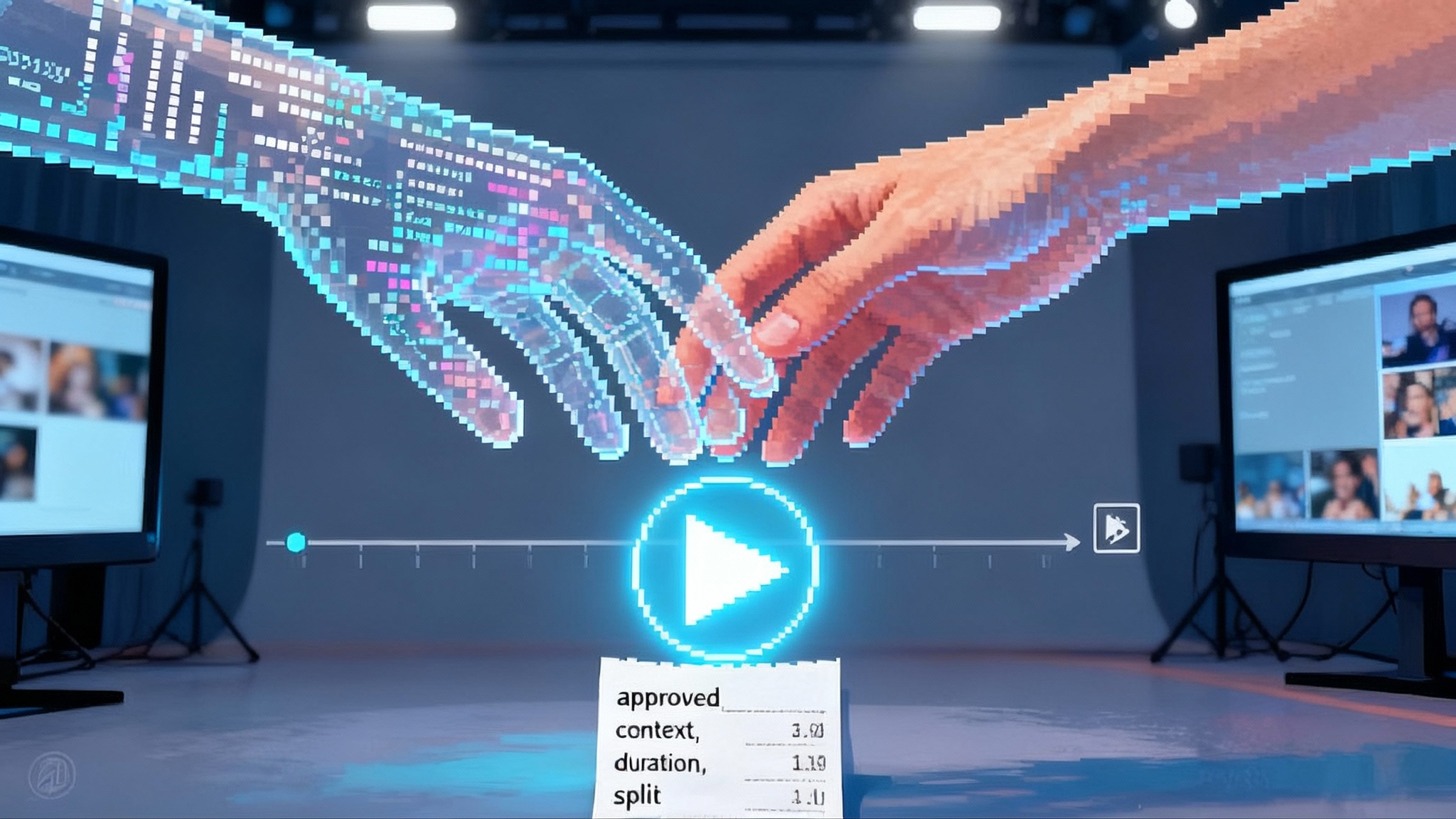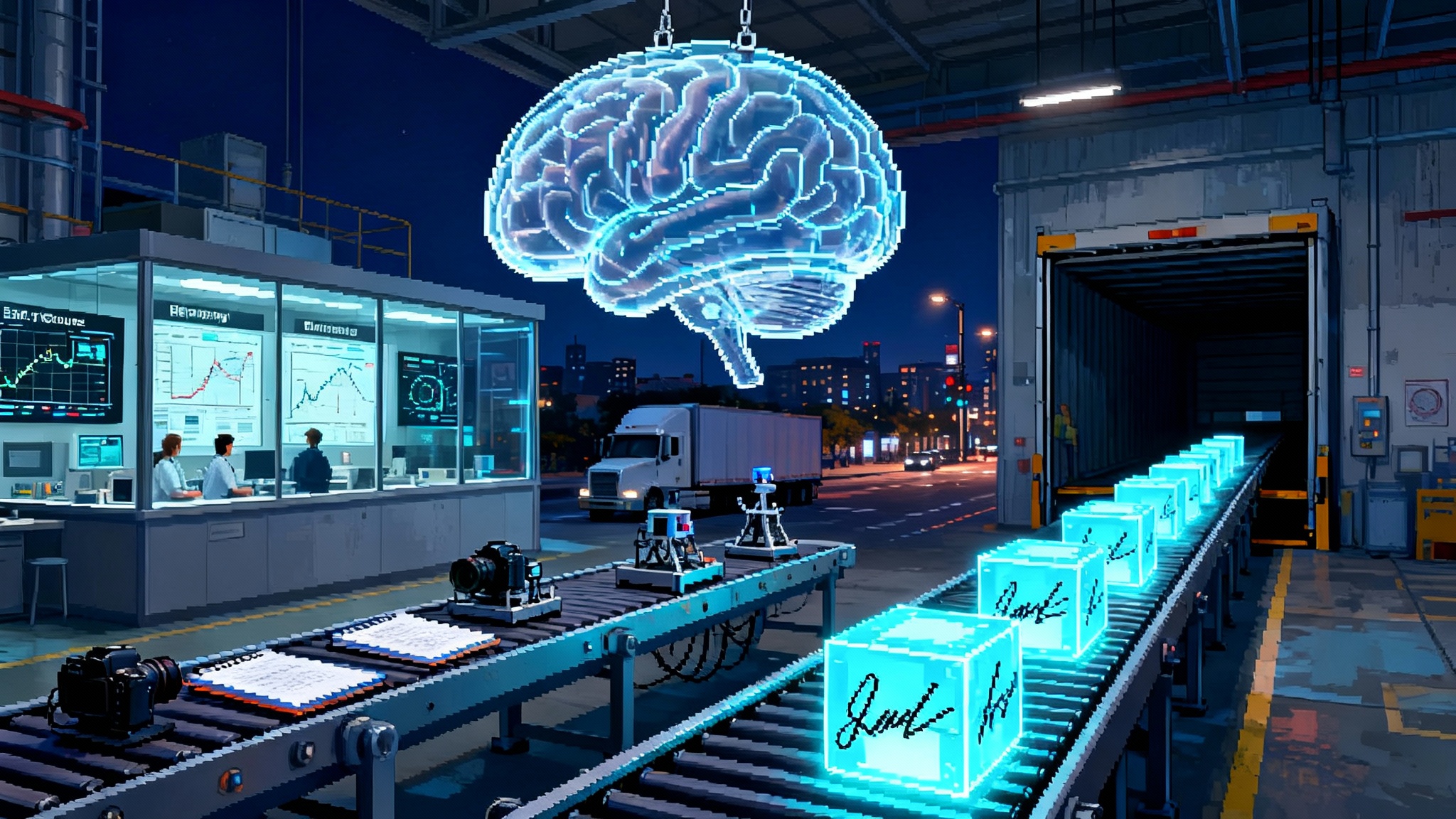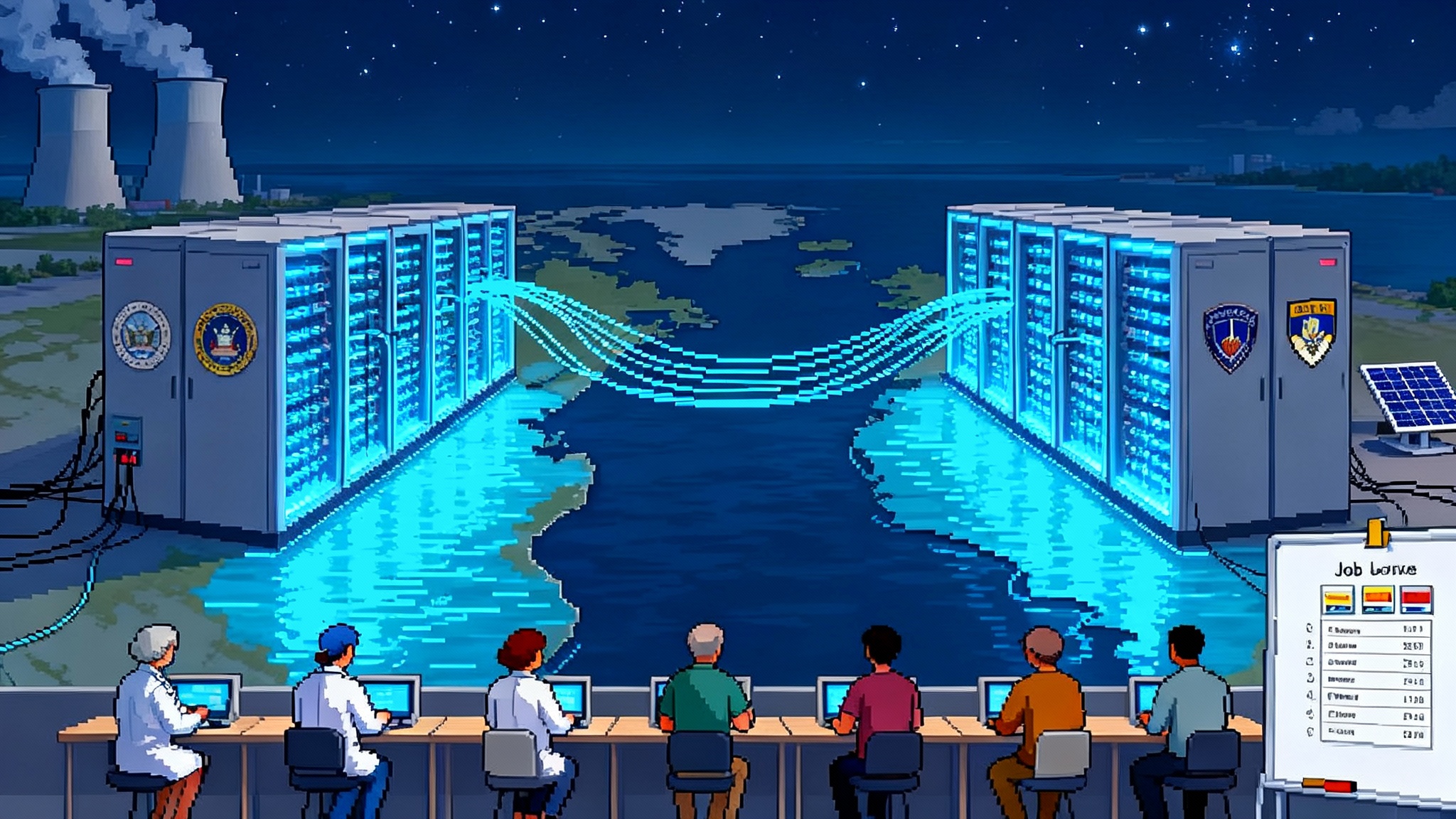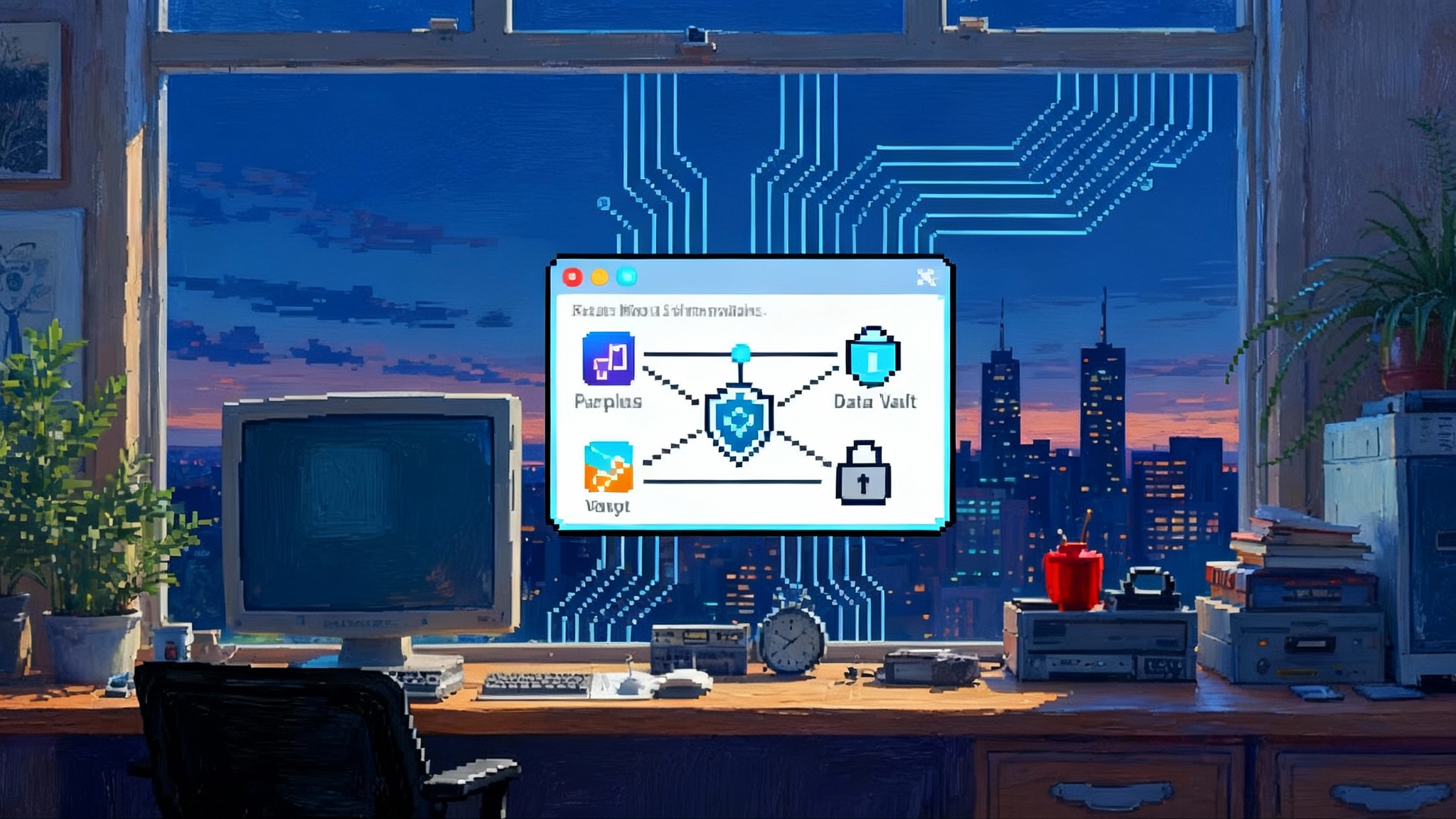Inference for Sale: Nvidia, DeepSeek and Test-Time Capital
Nvidia’s GTC 2025 and DeepSeek’s spring upgrades signal a clear shift. You can now buy more thinking per query. Learn how test-time capital, tiered cognition, and compute-aware UX reshape accuracy, cost, and control.

The cost of thinking just became a button
In March 2025, Nvidia reframed the center of gravity in artificial intelligence. The company did not just promise faster chips. It told the market that the next era is about agents that reason, plan, and act, and about turning inference into its own economy. Nvidia’s Blackwell Ultra family, pitched for the second half of 2025, and the next-generation Vera Rubin platform for 2026, were unveiled with a message tailored for customers who want to buy not only training capacity but measured, monetizable thinking at inference. The company emphasized premium services built on higher tokens per second and rack-scale upgrades, making it clear that better answers will be something you can pay for per request. If you want a concise overview of that day’s announcements from March 18, 2025, see CNBC on Blackwell Ultra.
Two months later, on May 29, 2025, DeepSeek pushed the same trend from a different angle. Its spring update to the R1 reasoning model landed near the top of public coding and reasoning leaderboards while maintaining a reputation for aggressive pricing. The signal was loud. A high-reasoning mode could be both accessible and tiered, pressuring incumbents to expose reasoning as a selectable mode rather than a single default. For context on that release and the early benchmarks, see Reuters on DeepSeek R1.
Put those together and you get a sharp conclusion. Depth and accuracy at inference are no longer fixed attributes of a model. They are a spend. Intelligence quality becomes a marginal, per-query choice.
What test-time capital really means
Training capital is the cost and effort invested before deployment. It buys a capable base model. Test-time capital is what you invest after deployment, on each query. It buys time to think.
In practice, test-time capital shows up as:
- More tokens spent on the same question, allowing longer deliberation or richer tool use.
- Multiple independent samples with self-consistency voting, where the system asks the model to think in several different ways and picks the best result.
- Tree search across chains of reasoning, exploring branches before committing to an answer.
- Specialized tool calls that reach into retrieval, code execution, or symbolic solvers.
- Compound systems that route subtasks to different models, each with its own price and latency profile.
Every technique increases expected quality and reliability, and every one of them costs more compute per request. The difference in 2025 is that providers are now productizing these knobs. Some let developers select clear “reasoning effort” levels. Some expose faster, cheaper modes for routine tasks and slower, pricier modes for high-stakes work. Nvidia’s roadmap signals that hardware, software, and monetization are aligning to make these per-request dial turns normal for both enterprises and consumers.
How this re-prices truth
For the first decade of modern machine learning, quality for a given task felt like a property of the model. Today, quality is also a function of how much thought the system spends on a single problem in real time. That changes the economics of truth in several ways:
- Truth becomes marginal. The question is not only “Which model?” but “How much thinking do we budget for this question?”
- Mistakes become budget-sensitive. A single pass yields speed at higher error. A multi-path search with verification lowers error at higher price.
- Consistency requires spend controls. A team that always selects the cheapest mode will inhabit a different reality than a team that defaults to deep reasoning. The same base model can yield different organizations different truths.
A practical example makes this concrete. Imagine a sales operations team asking an assistant to reconcile conflicting revenue numbers across five spreadsheets and two data warehouses. A one-pass summary will likely miss foreign exchange adjustments and late-arriving corrections. A multi-path reasoning mode will pull fresh data, run simple reconciliation code, fork hypotheses about discrepancies, and return a reconciled ledger with an audit of steps and confidence. That second path costs more. If the team is on a tight compute budget, it might accept a higher chance of being wrong this week. The price of truth is now explicit.
Tiered cognition as a product strategy
Products that once had a single intelligence mode will increasingly ship with tiers of cognition:
- Quick Answer: a single-pass response for real-time tasks. Low cost. High speed. Good enough for many inquiries.
- Verify Mode: multiple samples with self-consistency. Moderate cost. Useful for customer support, content moderation, or routine analysis.
- Deep Reason: multi-path, tool-using, hypothesis testing. Highest cost. Designed for audits, finance, safety, compliance, and critical strategy.
This is not just a pricing model. It is a user experience and a governance model. When users choose Deep Reason, they are also choosing traceability and longer latency. When they pick Quick Answer, they accept that they are browsing rather than adjudicating. As we argued in our work on preference loops in AI chats, the mode users select will feed back into what they consider credible, so make the choice explicit.
If you are building with reasoning models, this tiering is no longer optional. It clarifies expectations and aligns incentives. It also stabilizes costs, because you can map usage categories to specific budgeted modes instead of letting every query spin up a computational storm.
Compute-aware UX patterns that will stick
A compute-aware interface treats thinking as a visible resource that users can trade for speed or confidence. Design these patterns into your product and keep them in front of users.
- Speed versus depth toggles: Offer “Fast Now” and “Slow and Careful” buttons. Describe the difference in latency and typical accuracy, not just vague claims. Let users set a default per workspace.
- Transparency by default: Show a small panel labeled “What we did” that summarizes tool calls, external data fetches, number of samples, and any code run. Do not expose hidden chain-of-thought content. Do show the structure of the work and the costs.
- Budget sliders with caps: Let teams set monthly reasoning budgets with per-query caps for each mode. When a cap is hit, automatically fall back to Verify Mode or ask for approval.
- Progressive answers: Return a quick, clearly labeled preliminary answer in seconds, then continue reasoning in the background and present a refined version. Provide a Compare tab that highlights differences so users can see what the extra spend bought.
- Confidence bands instead of single numbers: Present a wider band for Quick Answer and a tighter band for Deep Reason. Condition users to read results as distributions, not absolutes.
- Cost-aware defaults: Route low-risk tasks to cheaper models automatically. Only escalate to deep modes if a risk or inconsistency detector fires.
Product leaders should also prepare for the measurement challenge. Deeper inference will change benchmark behavior, which is why we explored the observer effect in model testing. As you add sampling, tools, and search, your metrics should move from single-shot accuracy to distributions over strategies and costs.
Education and the new question of compute equity
As reasoning modes become paid tiers, education faces a fairness challenge. A student with access to Deep Reason gets better step-by-step analysis, tool use, and error checking than a peer limited to Quick Answer. That is not an abstract worry. It maps directly to test prep quality, lab report correctness, and code assignment reliability.
What to do now:
- District licenses should include a fixed pool of Deep Reason credits per student per month. Tie credits to assignments rather than open chat to prevent waste.
- Teachers should have a Reasoning Budget dashboard that shows how much test-time capital remains for the class and which activities will draw on it.
- Assessments must specify the allowed reasoning tier. If deep modes are allowed, require a “What we did” summary with tool calls and data sources, not hidden chain-of-thought.
- States should pilot compute vouchers that equalize access across districts, similar to early broadband programs. Compute equity will track achievement gaps if left to chance.
Enterprise decisions: from gut feel to compute spend
In companies, the most expensive errors are usually process errors, not model errors. Test-time capital gives teams a new lever to reduce process errors by buying better answers at the right moments.
A concrete playbook:
- Map decisions by risk and reversibility. For low-risk reversible choices, default to Quick Answer. For high-risk irreversible ones, enforce Deep Reason.
- Instrument the full decision chain. Log which reasoning tier was used, how many samples were taken, and what tools were invoked. Attach the log to the ticket, contract, or pull request.
- Set escalation rules. Automatically re-run a draft decision in Verify Mode if the quick result conflicts with historical patterns or if multiple stakeholders disagree.
- Budget by business outcome, not by team. Give Sales, Finance, and Security separate test-time capital pools. Tie replenishment to achieved error-rate reductions or cycle-time improvements.
- Favor compound systems. Route subtasks to specialized models rather than always invoking the heavyweight reasoning model. This lowers average cost without sacrificing quality where it matters.
If done well, enterprises learn which questions deserve dollars and which do not. That is a sharp improvement over a one-size-fits-all model setting. It also pairs naturally with browser-native agent interfaces, which make it easier to show users the cost and structure of work in context.
Regulation: compute receipts, not just disclosures
Regulatory attention is rightly shifting from training to inference. The public does not experience a training run. It experiences an answer.
Three policy moves would reduce harm while preserving innovation:
- Require compute receipts. For any regulated decision class, the provider must supply a standard summary of test-time resources used, tools called, and external data consulted. Keep chain-of-thought hidden to avoid teaching to the test or leaking sensitive heuristics.
- Define minimum reasoning for critical use. In areas like credit adjudication, high-stakes health triage, or safety analysis, require a verified multi-path mode with self-consistency or external checks. Encode it as a test-time standard rather than mandating a particular model.
- Mandate error-budget reporting. Large platforms should publish quarterly error rates by reasoning tier with a description of their escalation and rerun policies. That makes it harder to sell a premium badge without delivering reliability gains.
These interventions scale better than trying to certify models in the abstract. They focus the rules where harm occurs, at the point of inference.
Why Nvidia and DeepSeek mark the pivot
Hardware roadmaps and model updates do not usually change user experience on their own. Here they do, because both aim at the same bottleneck: test-time compute for reasoning.
- Nvidia: By centering GTC 2025 on agentic systems and shipping Blackwell Ultra with higher token throughput and rack-level configurations, Nvidia is productizing the supply side of test-time capital. The message is that cloud providers can design premium services on top of deeper inference and make real money doing it. That accelerates the creation of reasoning tiers in downstream products. The cadence toward Rubin turns this into a multi-year shift.
- DeepSeek: By pushing a strong reasoning update into an open ecosystem with aggressive pricing, DeepSeek pressures everyone to expose depth selection transparently. If an affordable model can deliver near-flagship reasoning on some tasks, incumbents must either drop prices or show that their deep mode buys measurable reliability.
It is the combination that matters. Supply expands while competition reveals demand curves. The result is that inference becomes the place where price discovery happens.
The design and business checklist for the test-time era
Adopt this checklist this quarter:
- Define tiers: Quick Answer, Verify, and Deep Reason, with clear descriptions of when each applies. Use plain language. Publish expected latency and cost ranges in your help docs.
- Price to outcomes: For enterprise customers, bundle reasoning credits into packages aligned with their workflows rather than raw token quotas. Offer burst pools for end-of-quarter crunches.
- Add governance rails: Require Deep Reason for any change that affects customer balances, system permissions, or legal text. Log the receipt automatically.
- Build a rerun policy: If outcomes are disputed or a result conflicts with historical patterns, trigger an automatic Deep Reason rerun with a fresh seed and tool set.
- Establish an audit view: Provide a masked “What we did” summary and a redacted set of intermediate artifacts that show structure without exposing chain-of-thought content.
- Measure net value: Track reductions in error, rework, and incident count per dollar of test-time capital. Use this to rebalance budgets monthly.
If you do only one thing now, put the Fast versus Deep toggle in front of users and log how they use it. The data will tell you where the real demand for truth lies.
Getting started without stalling your roadmap
A common objection is that teams lack the time to redesign their product around reasoning tiers. You do not need a full rewrite. Start with the following minimal viable changes and layer sophistication as you learn.
-
Add visible mode selection. Implement a simple selector with Quick, Verify, and Deep. Make Deep default only in a dedicated workspace for high-stakes tasks.
-
Track compute per answer. Log tokens, samples, tool calls, and wall-clock time. Display a compact receipt next to results. This creates informed consent and a data trail for optimization.
-
Route by risk, not by role. Build a small rule-based router that upgrades to Verify or Deep when signals suggest higher stakes. Good signals include outlier detection, high novelty compared to past work, or multi-stakeholder review.
-
Teach with progressive answers. Return a preliminary answer within seconds for fast feedback, then refine if the user clicks “Think more.” Offer a side-by-side diff so the upgrade feels tangible.
-
Close the loop with outcomes. Ask users to rate whether the decision held up two weeks later. Use those labels to tune when you escalate to deeper modes.
These steps deliver value quickly and create the telemetry needed for more advanced orchestration over time.
Culture change: from single answers to decisions with receipts
This shift is not simply technical. Teams will need to treat an answer as the output of a chosen process. Two people can ask the same system the same question and get differently reliable answers because they paid for different paths. That can feel unsettling, but it mirrors how humans already work. We ask for a gut check on some issues and a formal review on others. The difference now is that software can expose the same choice and meter it precisely.
There is a risk that organizations push everything to the cheapest tier and then blame the model when errors mount. There is an equal risk that they over-rotate into deep modes and stall their workflows. The right approach is to match tiers to stakes, surface the costs, and build muscle for when to escalate.
A smart ending for a new era
By the end of 2025, it will feel normal to see a Reasoning toggle next to the Send button. Nvidia’s GTC announcements and DeepSeek’s R1 updates are not isolated headlines. They mark the start of an economy where thinking is the product. When depth and accuracy become explicit spend, leaders gain a new control surface. Use it.
Treat each answer as a decision with a receipt. Teach your users to choose when to think harder. Put budgets where the errors are. In the test-time era, truth is not free, but it is purchasable. The advantage goes to those who know when to buy it.








